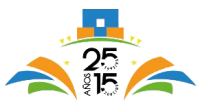| ABSTRACT |
Purpose. To introduce a novel autorefractor design that is intended to be manufacturable at low cost and evaluate its performance in measuring refractive errors. Methods. We developed a handheld, open-view autorefractor (the ͚͚QuickSee͛͛ [QS]) that uses a simplified approach to wavefront sensing that forgoes moving parts and expensive componentsAdult subjects (n = 41) were recruited to undergo noncycloplegic refraction with three methods: (1) a QS prototype, (2) a Grand Seiko WR-5100K (GS) autorefractor, and (3) subjective refraction (SR). Agreements between the QS and GS were evaluated using a Bland-Altman analysis. The accuracy of both autorefractors was evaluated using SR as the clinical gold standard. Results. The spherical equivalent powers measured from both autorefractors correlate well with SR, with identical correlation coefficients of r = 0.97. Both autorefractors also agree well with each other, with a spherical equivalent power 95% confidence interval of T0.84 diopters (D). The difference between the accuracy of each objective device is not statistically significant for any component of the power vector (p = 0.55, 0.41, and 0.18, for M, J0, and J45, respectively). The spherical and cylindrical powers measured by the GS agree within 0.25 D of the SR in 49 and 82% of the eyes, respectively, whereas the spherical and cylindrical powers measured by the QS agree within 0.25 D of the SR in 74 and 87% of theeyes, respectively. Conclusions. The prototype autorefractor exhibits equivalent performance to the GS autorefractor in matching power vectors measured by SR |




